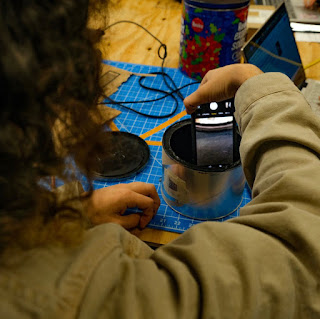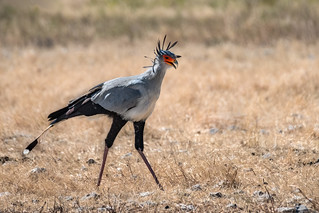[LST] Blinded By The LIGHT
It is now time for the first Action Project of the year! This Action Project is for my new STEAM class, Light, Sound, and Time. In this first unit, we have gone over Light. We started the unit by learning about our eyes and how they work. We learned about all of the different parts, like the Iris or the Retinas, and what they do. We went to an Optometrist to learn more. We then started talking about cameras and how they are able to capture moving light in a more permanent form. We learned about shutter speed and film, as well as when the first cameras were made. For this Action Project, we have been tasked with creating a simple camera, called a pinhole camera, to take simple black-and-white pictures. I took two pictures, one completely by myself and one in collaboration with N.M. Here are the results!
The pinhole camera is a very simple design. All you have to do to make one is have a cylindrical object with a lid that will not let light in, push a hole into it with a thumbtack, paint the inside black, and create a sort of “lens” that will block or let in light to the pinhole. Then, you put special photo paper inside of the camera and make sure to not let any light in. To do this, we used a darkroom. Then, when you are ready to take the picture, open the lens outside and allow the paper to absorb the light coming in through the pinhole. Then, you shut the lens and return to the darkroom. You then take the paper out and put it through three chemical solutions, the developer, the stop-wash, and the fixer. These then bring out the negative space as black to make a simple black-and-white image. My camera demonstrates one of the common effects of light, reflection. The light is reflected off the object as well as the paper to form color on the former and an image on the latter. However, it does not display refraction because the light stays in the air the whole time.
For this project, we had to paint the inside of the pinhole camera black. The reason we did this is that it made the inside of the camera completely lightproof. The only place light would interact with anything was on the paper that is taking the picture, because the rest of the inside has an absence of light. As previously mentioned, I took two pictures. For the first one, I only kept it open for five minutes. For the second one, we kept it open for seven minutes. The difference in the pictures is quite a lot. This camera displays some of the things we’ve learned about in class. It demonstrates how light and color work. White light hits an object which then absorbs everything but the color that it is, which then bounces off and goes into the pinhole which is then absorbed by the photo paper where the color is turned black. It is turned into negative space whereas the place that didn’t have color was turned white. Here are my calculations for how we had to set up the camera and the object:

Calculations, L.A.H., 2023
This was a very fun Action Project. I enjoyed making the cameras and traveling to Truman college to take pictures in their parking lot in the snow. I am quite happy with how the second picture came out. If I were to do this project again, I would use a metal container instead of a plastic one, as that probably would make it look a little better. Overall though, this was a good Action Project.
L.A.H. Making the Camera, H.T., 2023
First Image, L.A.H, 2023
Second Image, L.A.H., 2023
The pinhole camera is a very simple design. All you have to do to make one is have a cylindrical object with a lid that will not let light in, push a hole into it with a thumbtack, paint the inside black, and create a sort of “lens” that will block or let in light to the pinhole. Then, you put special photo paper inside of the camera and make sure to not let any light in. To do this, we used a darkroom. Then, when you are ready to take the picture, open the lens outside and allow the paper to absorb the light coming in through the pinhole. Then, you shut the lens and return to the darkroom. You then take the paper out and put it through three chemical solutions, the developer, the stop-wash, and the fixer. These then bring out the negative space as black to make a simple black-and-white image. My camera demonstrates one of the common effects of light, reflection. The light is reflected off the object as well as the paper to form color on the former and an image on the latter. However, it does not display refraction because the light stays in the air the whole time.
For this project, we had to paint the inside of the pinhole camera black. The reason we did this is that it made the inside of the camera completely lightproof. The only place light would interact with anything was on the paper that is taking the picture, because the rest of the inside has an absence of light. As previously mentioned, I took two pictures. For the first one, I only kept it open for five minutes. For the second one, we kept it open for seven minutes. The difference in the pictures is quite a lot. This camera displays some of the things we’ve learned about in class. It demonstrates how light and color work. White light hits an object which then absorbs everything but the color that it is, which then bounces off and goes into the pinhole which is then absorbed by the photo paper where the color is turned black. It is turned into negative space whereas the place that didn’t have color was turned white. Here are my calculations for how we had to set up the camera and the object:
Calculations, L.A.H., 2023
This was a very fun Action Project. I enjoyed making the cameras and traveling to Truman college to take pictures in their parking lot in the snow. I am quite happy with how the second picture came out. If I were to do this project again, I would use a metal container instead of a plastic one, as that probably would make it look a little better. Overall though, this was a good Action Project.


-2.jpg)

Comments
Post a Comment